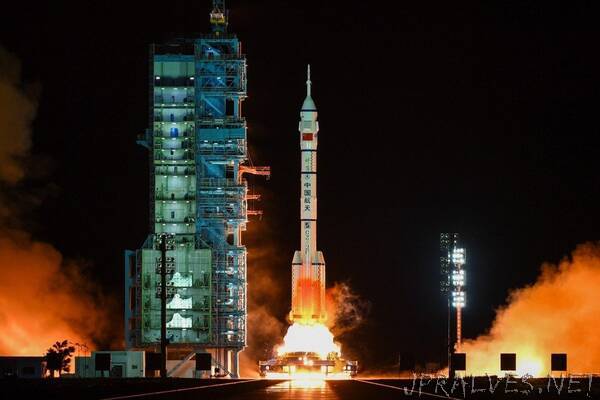
“China’s Shenzhou 13 spacecraft left Earth at 12.24am on Saturday, taking its three-person crew – including the country’s second female astronaut – to spend the next six months assembling the Tiangong space station.
The craft blasted off from the Jiuquan satellite launch centre in the Gobi Desert in northern China and is expected to arrive at the station’s Tianhe core module – 400km (248 miles) – after a journey of six and a half hours.
On board are Wang Yaping, 41, who will be the first woman to set foot on the Tianhe, and her fellow astronauts Zhai Zhigang, 55, and Ye Guangfu, 41. Their six months in orbit will double the record set by their predecessors last summer.
Zhai, the most senior of the trio, has been designated mission commander while Ye will be making his maiden space flight. All three previously served as the backup crew for the recently completed Shenzhou 12 mission.
The China Manned Space Agency (CMSA) announced the launch of Shenzhou-13 successful about 30 minutes after launch. Vice-premier Han Zheng and Xu Qiliang, vice-chairman of the Central Military Commission, who watched the launch in Beijing congratulated the staffs in the Beijing control centre.
A source at the Jiuquan centre said the lift-off time had been carefully chosen to capitalise on a pass of the Tianhe over the launch site, to give the astronauts the shortest possible journey to their destination. Docking will be assisted by China’s BeiDou navigational positioning system.
The source also said during the pre-launch ceremony tonight that the crew did not need to carry the portable ventilators, unlike other astronauts in previous Shenzhou missions, because the weather is much cooler now. They will only need to plug into the spacecraft‘s ventilation system after they board.
“Our automatic docking system performed well in the Shenzhou 12 and Tianzhou 3 missions. We are confident about it [and it] enables us to reduce the docking procedure from days to just hours,” the source said.
Once the Shenzhou 13 docks with the core module and the Tianzhou 3 cargo ship, the space station will form a T-shaped structure with a mass of nearly 50 tonnes.
The source said the same automatic piloting system – first used in September with the Tianzhou 3 cargo ship – was in place for the Shenzhou 13 mission, with both ignition and launch of the rocket controlled automatically.
CMSA spokesman Lin Xiqiang said on Thursday that several measures had been taken to ensure the crew’s safety, including having a Long March 2F rocket on standby, ready to take the already-assembled Shenzhou 14 craft into orbit at short notice in case of an emergency in space.
Similar preparations were made for the previous mission, with the Shenzhou 13 and its Long March 2F Y13 rocket on standby and in a state of near-readiness at Jiuquan since June when the first crew was sent to work on the space station, according to the CMSA.
A picture released by the agency also appears to show an escape launch system at the top of the payload compartment, to eject the spacecraft away from the rocket in case of emergency.”
